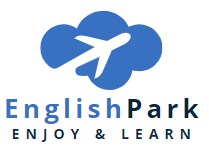こんにちは!IELTS Writing Task 2の高得点を目指す皆さん。この記事では、Task 2の概要から解答の書き方、スコアアップのテクニックまで、実践的な攻略法を徹底解説します。
私自身、IELTS講師として長年ライティング指導に携わってきた経験から、Task 2で高評価を得るためのポイントを惜しみなくシェアしたいと思います。特に、実際の問題に対する解答例を数多く紹介しながら、具体的な対策法をお伝えします。
ぜひ最後までお付き合いください。一緒にTask 2攻略への道を歩んでいきましょう!
IELTS Writing Task 2とは?
まずは、Task 2の位置づけと特徴を確認しておきましょう。IELTS Writingは大きく2つのタスクで構成されており、Task 2は「エッセイライティング」とも呼ばれる論述問題です。
Task 2の主な特徴は以下の通りです。
- 40分で250語以上の英文エッセイを書く
- 与えられたトピックについて、自分の意見を述べる
- 論理的かつ説得力のある文章が求められる
- ライティング全体の約2/3の配点がTask 2で占められる
Task 2は語数・配点ともにTask 1の約2倍であり、IELTS Writingにおいて最も重要度の高いタスクだと言えます。単に英語力だけでなく、論理的思考力や構成力など、総合的な文章力が問われる難関パートなのです。
高得点を狙うには、Task 2の性質をしっかりと理解し、戦略的に準備を進めることが不可欠です。以下の内容を通じて、着実にTask 2の実力を高めていきましょう。
Task 2の出題形式と問題の型
Task 2の問題は、大きく分けて以下の3つの型に分類できます。
- 意見陳述型(Opinion)
- 特定のトピックについて、自分の意見を述べる問題
- 賛成・反対の立場を明確にし、理由を述べることが求められる
- ディスカッション型(Discussion)
- あるトピックについて、様々な立場や視点を比較・検討する問題
- 各立場の長所と短所を考察し、自分の見解を述べる
- 両面考察型(Two-part Question)
- 2つの問いが組み合わされた形式の問題
- 各問いに対してバランス良く論じ、関連性にも言及する
これらの問題形式は、実際の試験でも頻繁に登場します。それぞれの型の特徴を理解し、適切な解答の組み立て方を身につけることが重要です。
以下の表は、各問題形式の特徴と注意点をまとめたものです。
| 問題形式 | 特徴 | 注意点 |
|---|---|---|
| 意見陳述型 | – 賛成・反対の立場を明示する – 自分の意見の根拠を述べる | – 主張が一貫しているか – 十分な理由付けがなされているか |
| ディスカッション型 | – 複数の立場・視点を考察する – 各立場の長所・短所を論じる | – 様々な角度から公平に論じているか – 自分の意見を明確にしているか |
| 両面考察型 | – 2つの問いに対して論じる – 各問いを関連づけて論じる | – 各問いに十分に答えているか – 2つの問いの関係性に言及しているか |
それでは、実際の問題例を見ながら、各形式の攻略法を詳しく見ていきましょう。
意見陳述型問題の解答例と攻略ポイント
まずは、意見陳述型問題の解答例から見ていきます。以下は、ある大学が必修科目を増やす提案に対して、自分の意見を述べる問題です。
Some people believe that universities should make all courses compulsory, while others think that students should be allowed to choose the courses they want to study. Discuss both views and give your own opinion.
この問題に対する解答例を見てみましょう。
In recent years, there has been a debate about whether universities should make all courses mandatory or allow students to select their preferred subjects. While both approaches have their merits, I believe that giving students the freedom to choose their courses is more beneficial.
On the one hand, making all courses compulsory ensures that students receive a well-rounded education. By exposing students to a wide range of subjects, universities can help them develop a broader perspective and a more diverse skill set. This can be particularly valuable in today's rapidly changing job market, where adaptability and versatility are highly prized.
However, I would argue that allowing students to choose their courses is more advantageous. Firstly, it enables students to pursue their passions and interests. When students are able to study subjects that genuinely excite them, they are more likely to be motivated and engaged in their learning. This can lead to higher levels of academic achievement and a deeper understanding of the subject matter.
Moreover, giving students the autonomy to select their courses helps them develop important decision-making and critical thinking skills. By weighing the pros and cons of different options and considering their long-term goals, students learn to take responsibility for their own education and future. This fosters a sense of ownership and self-direction that can serve them well in their personal and professional lives.
In conclusion, while there are benefits to making all courses compulsory, I believe that the advantages of allowing students to choose their subjects outweigh them. By giving students the freedom to pursue their interests and take control of their education, universities can cultivate more engaged, motivated, and self-directed learners.この解答例では、両方の立場の長所を考察しつつ、学生が科目を選択できることの利点を主張しています。以下の点が評価のポイントになります。
- 導入段落で、問題の背景と自分の立場を明確に述べている
- 第2段落で、必修科目の利点を認めつつ、反論の余地を残している
- 第3・4段落で、科目選択の自由の方が有益だと主張し、複数の理由を挙げている
- 結論で、自分の意見を再度明示し、全体を要約している
また、以下のような表現を効果的に使うことで、論理的で説得力のある文章になっています。
On the one hand(一方では)However(しかしながら)Firstly(第一に),Moreover(さらに)In conclusion(結論として)
意見陳述型の問題では、自分の立場を明確にし、その理由を論理的に述べることが重要です。両方の立場に言及しつつ、自分の意見に説得力を持たせる構成を心がけましょう。
ディスカッション型問題の解答例と攻略ポイント
次は、ディスカッション型問題の解答例を見ていきます。以下は、子供の教育において学校と家庭のどちらがより重要か、議論する問題です。
Some people think that schools play the most important role in a child’s development, while others believe that parents are more influential. Discuss both views and give your own opinion.
この問題に対する解答例を見てみましょう。
Education plays a crucial role in a child's development, and there is an ongoing debate about whether schools or parents have the most significant influence. While both school and family environments contribute to a child's growth, I believe that parents have the most profound and lasting impact.
Schools certainly play a vital role in shaping a child's intellectual growth and social skills. In the classroom, children acquire knowledge and learn how to interact with their peers and authority figures. Experienced teachers can identify a child's strengths and weaknesses, providing appropriate guidance and support to help them reach their full potential. Furthermore, schools offer a structured environment that helps children develop discipline and time management skills.
However, I would argue that parents have an even greater influence on their children's development. Firstly, parents are the earliest and most consistent role models in a child's life. From birth, children observe and imitate their parents' behavior, attitudes, and values. The way parents interact with their children and each other sets the tone for the child's emotional and social development. A nurturing and supportive home environment fosters a child's self-esteem, resilience, and emotional intelligence.
Moreover, parents have the unique opportunity to provide individualized attention and guidance to their children. They can tailor their approach to their child's specific needs, interests, and learning style. This one-on-one support is especially crucial during the early years when children are rapidly developing language, cognitive, and motor skills. By engaging in activities such as reading, playing, and exploring together, parents can stimulate their child's curiosity and love for learning.
In conclusion, while both schools and parents contribute to a child's development, I believe that parents have the most significant and lasting impact. The values, attitudes, and skills children learn at home form the foundation for their future success and well-being. Schools play a critical role in providing formal education and socialization, but it is the parents' love, guidance, and support that truly shape a child's character and potential.この解答例は、学校と家庭の両方の役割を詳しく考察しつつ、家庭の影響力の大きさを論じています。以下のような構成上の工夫が見られます。
- 第1段落で問題の背景を説明し、自分の見解を提示
- 第2段落で学校の役割の重要性を認め、学校教育の利点を具体的に述べる
- 第3・4段落では、家庭の影響力の方が大きいと主張し、複数の理由を挙げて論じる
- 結論では、自分の意見を再確認し、学校と家庭の役割を比較しつつ、家庭の重要性を強調する
また、以下のような表現を用いることで、議論に深みと説得力を持たせています。
While both ... and ... contribute to ...(〜と〜の両方が〜に寄与する一方で)certainly(確かに)However(しかしながら)Firstly(第一に)、Moreover(さらに)In conclusion(結論として)
ディスカッション型の問題では、提示された複数の見方を公平に考察することが求められます。各立場の長所と短所を論じつつ、最終的には自分の意見を明確に述べる必要があります。バランスの取れた議論を展開する力を養いましょう。
両面考察型問題の解答例と攻略ポイント
最後に、両面考察型問題の解答例を見ていきます。以下は、テクノロジーが人々のコミュニケーション能力に与える影響について、2つの側面から論じる問題です。
Technological devices are becoming increasingly popular in today’s world. Some people think these devices can improve communication skills, while others believe they can cause a decline in face-to-face interaction abilities. To what extent do you agree or disagree with these views?
この問題に対する解答例を見てみましょう。
In the modern era, technological devices have become ubiquitous, and their impact on human communication has been a topic of much debate. While some argue that these devices can enhance communication skills, others contend that they may lead to a deterioration in face-to-face interaction abilities. In my opinion, both perspectives hold some truth, but the ultimate effect depends on how individuals choose to use these technologies.
On the one hand, technological devices have the potential to improve communication skills in several ways. Firstly, they provide access to a vast array of information and resources that can help individuals expand their knowledge and vocabulary. This, in turn, can enhance their ability to express themselves effectively and engage in meaningful discussions. Moreover, digital platforms such as social media and online forums allow people to connect with others who share similar interests, encouraging the exchange of ideas and fostering a sense of global community.
However, it is also important to acknowledge the potential drawbacks of relying too heavily on technological devices for communication. When people become overly dependent on digital interactions, they may struggle to develop and maintain strong face-to-face communication skills. Non-verbal cues such as facial expressions, body language, and tone of voice are critical components of effective communication, but these can be easily lost or misinterpreted in digital exchanges. Additionally, the instant gratification and brevity often associated with digital communication may lead to a decline in the ability to engage in deep, meaningful conversations that require active listening and empathy.
Ultimately, I believe that the impact of technological devices on communication skills depends largely on how individuals choose to use them. When used in moderation and as a complement to face-to-face interactions, these devices can be powerful tools for enhancing knowledge, fostering connections, and facilitating the exchange of ideas. However, when relied upon excessively at the expense of in-person communication, they may contribute to a decline in the very skills they seek to promote.
In conclusion, while technological devices have the potential to both improve and hinder communication skills, the key lies in finding a balance between digital and face-to-face interactions. By using these tools judiciously and prioritizing the development of strong interpersonal skills, individuals can harness the benefits of technology while mitigating its potential drawbacks.この解答例では、テクノロジーがコミュニケーション能力に与える正負両面の影響を考察し、最終的にはバランスの重要性を主張しています。以下のような特徴が見られます。
- 第1段落で問題の背景を説明し、両方の見方に一定の真理があると述べている
- 第2段落でテクノロジーの利点を、第3段落では欠点を具体的に論じている
- 第4段落で、影響の度合いは使い方次第だと指摘し、適度な使用の重要性を述べている
- 結論で、デジタルでのやり取りと対面コミュニケーションのバランスが鍵だと主張している
また、テクノロジーの影響を論じる際に、以下のような表現が効果的に使われています。
On the one hand(一方では)、However(しかしながら)Firstly(第一に)、Moreover(さらに)、Additionally(さらに)Ultimately(最終的には)In conclusion(結論として)
両面考察型の問題では、2つの問いに対してバランス良く議論を展開することが求められます。それぞれの問いに十分に答えつつ、両者の関連性にも言及する必要があります。適切な構成と
表現力を身につけ、様々な角度から論点を考察する力を養いましょう。
高得点を狙うためのTask 2の勉強法
ここからは、Task 2で高得点を取るための勉強法をご紹介します。ライティング力向上のヒントとして、ぜひ参考にしてみてください。
勉強法1:良質なエッセイを分析する
優れたエッセイを数多く読み、その構成や表現を分析することは、ライティング力向上に欠かせません。Task 2の高評価解答を題材に、以下のような観点を意識しながら分析してみましょう。
- 全体の構成や段落構成
- 各段落のトピックセンテンスと supporting sentences
- 論理展開のパターンと根拠の示し方
- 効果的な接続表現の使い方
- 問題文のキーワードのパラフレーズ方法
良質なエッセイに触れることで、論理的で説得力のある文章の書き方が自然と身についていきます。優れた表現は積極的に取り入れ、自分の解答に生かしていきましょう。
勉強法2:問題文を deeply analyze する
Task 2で求められるタスクを的確に理解するには、問題文を深く分析する習慣が大切です。出題文を見たら、以下のようなポイントを必ずチェックするようにしましょう。
- 問われている事柄は何か(topic)
- 論じるべき観点や立場は何か(key points to discuss)
- 意見を求められているか、両論併記か(question type)
- 指示キーワード(directive words)は何か
これらを正しく把握することで、課題に合った的確な解答が書けるようになります。問題文を深く読み解く訓練を重ねることが、Task 2攻略の第一歩だと言えるでしょう。
勉強法3:時間を計って練習する
本番のTask 2は40分で解答を完成させる必要があるため、時間管理能力も重要です。日頃から時間を計って解答する練習を積み、本番に備えましょう。
練習の際は、以下のように時間配分を意識すると良いでしょう。
- 問題文の分析とアウトライン作成(5分)
- イントロダクションの執筆(5分)
- ボディパラグラフの執筆(各10分)
- まとめの執筆(5分)
- 見直しと修正(5分)
この配分はあくまで目安ですが、メリハリを付けて解答を進める習慣をつけることが大切です。時間内に解答を仕上げることを意識しながら、数多くの問題演習を重ねていきましょう。
勉強法4:添削を活用する
自己流になりがちなライティング学習では、客観的な評価やアドバイスが不可欠です。有償・無償を問わず、質の高い添削を受けることは上達への近道と言えるでしょう。
添削では、以下のような観点からフィードバックがもらえます。
- 課題遂行力(task achievement)
- 一貫性と結束性(coherence and cohesion)
- 語彙の幅と精度(lexical resource)
- 文法の範囲と正確さ(grammatical range and accuracy)
自分の癖や弱点を知ることで、重点的に強化すべきポイントが明確になります。単に間違いを指摘してもらうだけでなく、どう直せば良いかまで一緒に考えてもらうことが重要ですね。
定期的に添削を受け、着実にライティング力を伸ばしていきましょう。
Task 2で使える表現集
最後に、Task 2で即戦力として使える表現をご紹介します。人気の接続表現やフレーズを集めてみました。ぜひ参考にしてみてください。
意見を述べる表現
- In my opinion / From my perspective(私の意見では)
- I believe that …(私は〜だと信じる)
- It seems to me that …(私には〜のように思われる)
- I am convinced that …(私は〜確信している)
賛成・反対の立場を示す表現
- I completely agree with the idea that …(私は〜という考えに全面的に賛成だ)
- I strongly disagree with the notion that …(私は〜という考えに強く反対する)
- While I understand the argument that …, I believe …(〜という主張はわかるが、私は〜と考える)
理由を述べる表現
- One reason for this is that …(その理由の1つは〜である)
- This is primarily because …(これは主に〜だからである)
- Another factor to consider is …(もう1つ考慮すべき要因は〜だ)
具体例を挙げる表現
- For instance / For example(例えば)
- To illustrate this point(この点を説明するために)
- A case in point is …(良い例が〜である)
譲歩や対比を示す表現
- While it is true that …, it is also important to note that …(確かに〜だが、〜も重要な点として留意すべきだ)
- Although …, …(〜だけれども、〜だ)
- In spite of / Despite the fact that …(〜にもかかわらず)
- On the other hand(一方で)
これらの表現を使いこなすことで、論理的でアカデミックな印象のエッセイが書けるようになります。例を参考に、実際に使ってみる練習を重ねることが大切ですね。
Key Points
- Task 2は、与えられたトピックに対して論理的に意見を述べる力が問われる
- 意見陳述型、ディスカッション型、両面考察型の出題形式の特徴を理解しよう
- 良質なエッセイの分析と問題文の深い読解が不可欠
- 時間を計って練習し、本番のペース配分を体得しよう
- 添削を通じて自分の弱点を知り、重点的に強化しよう
- 役に立つフレーズや接続表現を身につけ、アカデミックなエッセイを目指そう
以上、IELTS Writing Task 2の解答例や攻略法をお伝えしました。Task 2は単なる英語力だけでなく、論理的思考力や構成力など、総合的な文章力が問われる試練のパートです。
しかし、正しい対策法を知り、地道に訓練を積むことで、必ず克服できるはずです。解答例を参考に、実際に書く練習を数多く重ねることが何より重要だと言えるでしょう。
諦めずに努力を続ければ、必ず報われる日が来ます。一歩ずつでも前進を重ね、理想のライティング力の獲得を目指して頑張っていきましょう。
皆さんのIELTS合格を心から願っています。一緒に高得点を目指して頑張りましょう!









